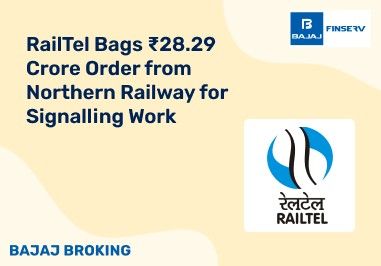What is Gravestone Doji?
Technical indicators play a huge role in helping both day and swing traders who are new to the market, better investigate trading techniques. Candlestick patterns are technical indicators that provide specific patterns to help traders get potentially higher returns. The Gravestone Doji candlestick is one of these patterns that appears regularly on candlestick charts.
Understand Gravestone Doji Meaning
To understand the Gravestone Doji better, it is first important to understand what a Doji is in the context of candlestick charts. A Doji is essentially formed when the open and close of a candlestick are equal or almost equal. This is considered a neutral position and points to an indecision between the buyer and the seller.
Coming back to the Gravestone Doji which happens to be one of the many Doji formations available, it is a candlestick that points towards a price reversal. The Gravestone Doji usually appears during a market uptrend, but to confirm this reversal, traders need to wait for the candle to form. The Gravestone Doji makes an appearance when the open, low, and close prices are all the same or have very slight differences.
The gravestone Doji candlestick does not make a regular appearance in candlestick charts, but investors must know what it looks like to make the best use of it. Think of the Gravestone Doji looking like an inverse dragonfly design-wise or even the alphabet “T” when placed upside-down.
How Does the Gravestone Doji Candle Look?
Since gravestone Dojis are not very common in candlestick charts, it is still important for traders and investors to know what they look like to make use of them. In a gravestone Doji, the upper shadow is significantly longer and its body is at the very bottom of the candlestick. This formation indicates that the open, close, and low prices are either the same or extremely similar to each other. This is how the inverted “T” patterns forms.
Of the times that the Gravestone Doji makes an appearance, the peak of uptrends is the most common. However, sometimes it can happen that the Gravestone Dohi can also form near the bottom of downtrends. Under such circumstances, the situation should not be considered bullish and should instead be taken more as a sign of the continuation of the trend. This is because sometimes the decline will have more space to run before it reaches the oversold zone.
How is the Gravestone Doji Candlestick Pattern Formed?
Having discussed what the Gravestone Doji looks like when it is formed, it is also important to know how it is formed. The Gravestone Doji is formed when the price closes close or at the same level as the price it opened. The pattern thus assumes that the open and low are near. This happens in a bullish situation when, after seeing the prices move upwards, they return to previous levels post hitting a strong resistance area.
Types of Doji Patterns
Like the Gravestone Doji, there are quite a few more Doji patterns. Below is a list:
The Standard Doji Pattern
The Standard Doji pattern is a single candlestick. By itself, the standard Doji is hardly of little significance. To decipher the candlestick, traders need to figure out what this candlestick indicates. This can be done by observing the price activity that has led up to the chart formation.
The Dragonfly Doji
When it comes to the Dragonfly Doji, the pattern either forms at the top of an uptrend or the bottom of a downtrend. This further indicates that the possibility of a change in direction exists. The pattern also indicates that there was no price increase above the beginning price because there exists no line above the horizontal bar. This forms a 'T' shape. The Dragonfly Doji has a long lower wick of an adverse move indicating a bullish trend.
The Long-Legged Doji
In a Long-Legged Doji, the vertical lines above and below the line are longer. This indicates the drastic up-and-down movement of the price action of the candle. This movement takes place during the candle’s timeframe but closes at almost the same level as it opened. These levels are an indication of both the buyer's and seller’s indecision.
The 4 Price Doji
When there is only a horizontal line with no vertical line either above or below it is a 4 Price Doji. Here, all four prices, i.e. the candle's high, low, open, and closure are the same. This gives a strong indicator of the indecision of the investors and sellers involved.
Gravestone Doji Vs. Dragonfly Doji
Listed below are the differences between the Gravestone Doji and the Dragonfly Doji:
Aspect
| Gravestone Doji
| Dragonfly Doji
|
Reversal Pattern
| The Gravestone Doji is a bearish reversal pattern signifying potential for the trend to change from bullish to bearish
| The Dragonfly Doji is a bullish reversal pattern signifying potential for the trend to change from bearish to bullish
|
Pattern Look
| Long upper shadow + very little or no lower shadow + small or no body near low of the candlestick
| Long lower shadow + very little or no upper shadow + small or no body near the high of the candlestick
|
Indication
| The Gravestone Doji is an indicator of when a buyer decides to push the price too high and loses control and thus gives an opening for the seller to drive the price down and close it near the low end
| The Dragonfly Doji is an indicator of when a seller decides to push the price too low and loses control and thus gives an opening for the buyer to drive the price up and close it near the high end
|
Trading with Gravestone Doji at the Top of an Uptrend
A Gravestone Doji usually appears at the top of an uptrend and indicates a potential reversal. The pattern of the Gravestone Doji explained above, forms when the price opens, rallies higher, but then closes at or near the opening price. This further indicates that the upward momentum is weakening and the potential of a follow-up downtrend is high. This is why the stop loss of the position in such situations needs to be set exactly above the high of the pattern and the take profit target should ideally be 2x of the Gravestone Doji.
Trading with Gravestone Doji at the Bottom of a Downtrend
The Gravestone Doji showing up in a bearish market is very rare and only happens when there is indecision. Though there still exists a possibility of a trend reversal, as a bullish indicator, it is weaker. This is why other means are needed to confirm the trend. This is why it is considered sensible to open a short position. If a bull spots this pattern in the middle of a downtrend, it is advised that they do not go long, even if they anticipate the reversal of a bearish trend.
Conclusion
Gravestone Doji is one of the many tools traders use to help them trade better. It is a type of candlestick pattern that looks like an upside-down "T", with a long line going up and no line going down. The gravestone Doji indicates that the stock opened at a particular price, was pushed to go up by the buyer, but then came back down and closed at or near the opening price. When used in the right manner, along with other tools, the gravestone Doji can truly help traders make better investment decisions.
Disclaimer: Investments in the securities market are subject to market risk, read all related documents carefully before investing.
This content is for educational purposes only. Securities quoted are exemplary and not recommendatory.
For All Disclaimers Click Here: https://bit.ly/3Tcsfuc













